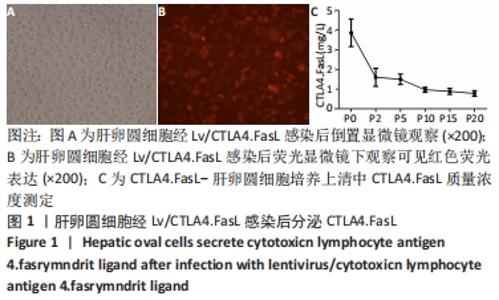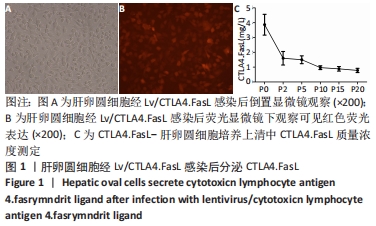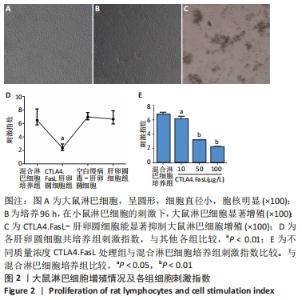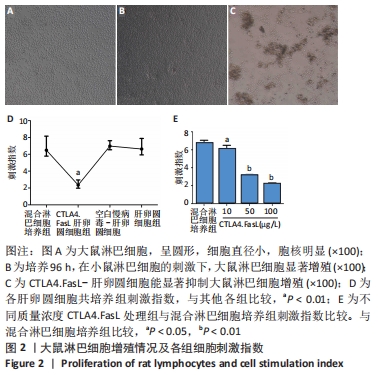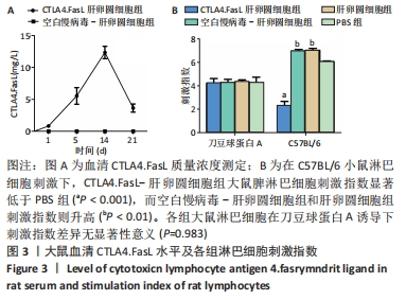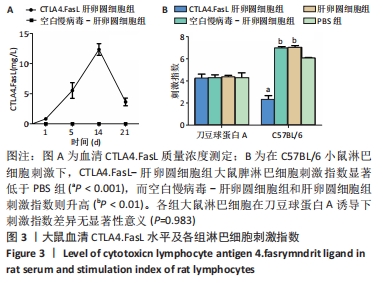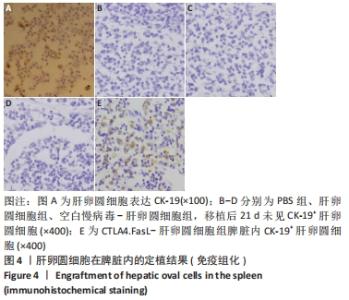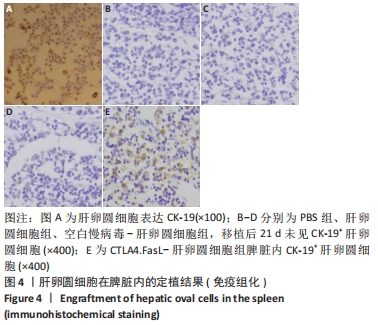[1] KO S, RUSSELL JO, MOLINA LM, et al. Liver progenitors and adult cell plasticity in hepatic injury and repair: knowns and unknowns. Annu Rev Pathol. 2020;15:23-50.
[2] LEE CA, SINHA S, FITZPATRICK E, et al. Hepatocyte transplantation and advancements in alternative cell sources for liver-based regenerative medicine. J Mol Med (Berl). 2018;96(6):469-481.
[3] MAKDASI E, AMSILI S, ARONIN A, et al. Toxicology and pharmacokinetic studies in mice and nonhuman primates of the nontoxic, efficient, targeted hexameric FasL: CTLA4-FasL. Mol Cancer Ther. 2020;19(2):513-524.
[4] PODOJIL JR, MILLER SD. Targeting the B7 family of co-stimulatory molecules: successes and challenges. Biodrugs. 2013;27(1):1-13.
[5] WANG F, YU JY, WANG Y, et al. Combination therapy with TNFR-Fc and CTLA4-FasL using the recombinant adeno-associated virus potently suppresses adjuvant-induced arthritis in rats.Appl Microbiol Biotechnol. 2015;99(15):6327-6337.
[6] LI WL, SU J, YAO YC, et al. Isolation and characterization of bipotent liver progenitor cells from adult mouse. Stem Cells. 2006;24(2):322-332.
[7] ADDANTE A, RONCERO C, LAZCANOITURBURU N, et al. A Signaling crosstalk between BMP9 and HGF/c-Met regulates mouse adult liver progenitor cell survival. Cells. 2020;9(3):752.
[8] GE JY, ZHENG YW, TSUCHIDA T, et al. Hepatic stellate cells contribute to liver regeneration through galectins in hepatic stem cell niche. Stem Cell Res Ther. 2020;11(1):425.
[9] BELASCHK E, ROHN S, MUKIIBI R, et al. Isolation, characterization and cold storage of cells isolated from diseased explanted livers. Int J Artif Organs. 2017;40(6):294-306.
[10] JULICH-HAERTEL H, TIWARI M, MEHRFELD C, et al. Isolation and enrichment of liver progenitor subsets identified by a novel surface marker combination. J Vis Exp. 2017;120:55284.
[11] DAI H, ZHENG Y, THOMSON AW, et al. Transplant tolerance induction: insights from the Liver. Front Immuno. 2020;11:1044.
[12] LI P, ZHANG YY, DENGJ. PDL1Ig gene-loaded BMSCs Induce liver transplantation immune tolerance. Eur Rev Med Pharmacol Sci. 2018;22(10):3214-3223.
[13] CHEN QY, YOU Y, ZHANG YJ, et al. Hepatocyte growth factor mediates a novel form of hepatic stem/progenitor cell-induced tolerance in a rat xenogeneic liver rejection model. Int Immunopharmacol. 2021;90:107180.
[14] ZHANG W, WANG F, WANG B, et al. Intraarticular gene delivery of CTLA4-FasL suppresses experimental arthritis. Int Immunol. 2012;24(6):379-388.
[15] FAGG WS, LIU NY, YANG MJ, et al. Magnetic targeting of stem cell derivatives enhances hepatic engraftment into structurally normal liver. Cell Transplant. 2017; 26(12):1868-1877.
[16] VISHWAKARMA SK, BARDIA A, LAKKIREDDY C, et al. Intraperitoneal transplantation of bioengineered humanized liver grafts supports failing liver in acute condition. Mater Sci Eng C Mater Biol Appl. 2019;98:861-873.
[17] MAS VR, MALUF DG. In Utero cell transplantation as a tool for fixing liver-based inherited metabolic disorders: early technical evidence supporting potential feasibility. Transplantation.2019;103(7):1300-1301.
[18] WANG LT, WANG CM, WANG ZZ, et al. Transforming the spleen into a liver-like organ in vivo. Sci Adv.2020;6(24):eaaz9974.
[19] MUTHIAH MD, HUANG DQ, ZHOU L, et al. A murine model demonstrating reversal of structural and functional correlates of cirrhosis with progenitor cell transplantation. Sci Rep. 2019;9(1):15446.
[20] IRUDAYASWAMY A, MUTHIAH M, ZHOU L, et al. Long-term fate of human fetal liver progenitor cells transplanted in injured mouse livers. Stem Cells. 2018;36(1): 103-113.
[21] HERRERO A, PRIGENT J, LOMBARD C, et al. Adult-derived human liver stem/progenitor cells infused 3 days postsurgery improve liver regeneration in a mouse model of extended hepatectomy. Cell Transplant. 2017;26(2):351-364.
|
